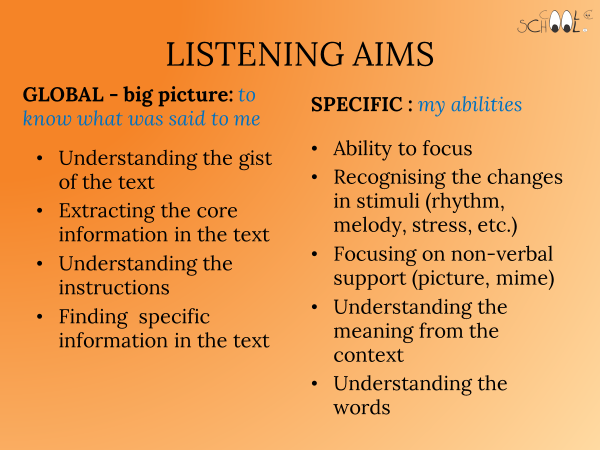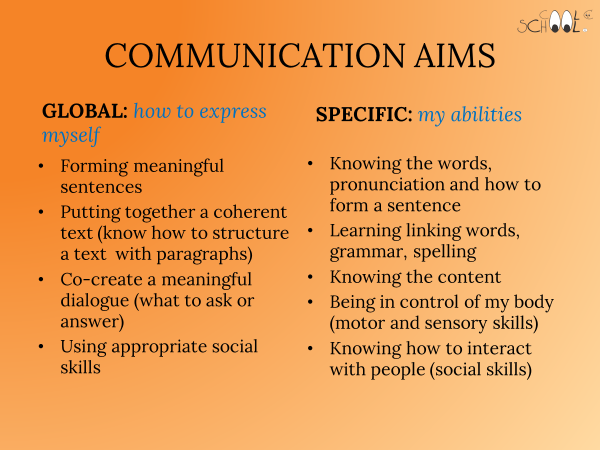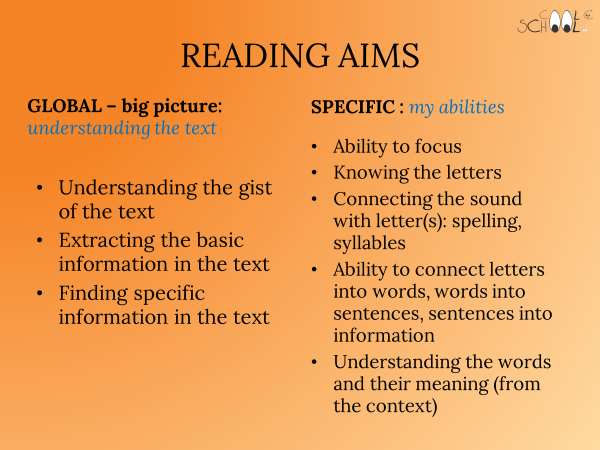- Home
- Various Articles - Approaches in practice
- The Big Picture of the Project-Based Approach (PBA) Language Learning
The Big Picture of the Project-Based Approach (PBA) Language Learning
Mija Selič is a teacher, teacher trainer and the owner of C00lSch00l private language school. She is an innovator in finding new ways of teaching and in developing teaching materials for very young language learners. She has a master’s degree in primary teaching and a degree in English. She also holds a certificate in convergent pedagogy.
E-mail: mija.selic@gmail.com, www.c00lsch00l.eu
Introduction
The article is the second one in the series of the Content-Based Instruction for Young Foreign Language Learning. The first one, Content-Based Instruction for Young Foreign Language Learning was published in HLT, April 2021, Year 23, Issue 2, where the main idea of the PBA was explained. In the big picture of the PBA, we focus on the language aims.
The Language Purpose
Languages have developed from the need for communication: exchanging information, expressing opinions, seeking friendships, explaining our views, sharing our feelings, and so on. To exchange meaningful information and convey an understandable message, languages are continually adapting in search of their functionality. Hence, the primary use of language is functional communication.
The primary need of any language learner, irrespective of their age, is the ability to exchange information. We should therefore encourage our students to express themselves according to their level using the set of skills they possess.
In the process of communication, young learners use their not-yet-developed skills and then develop them further to build their neurology of learning: social, motor, sensory and communication skills. In this way, children learn a language.
Developing the neurology of learning through a target language is therefore the big picture of young language learning. This should be one of the paramount professional knowledge priorities of those of us who teach young children. Without it, children can only learn data (isolated vocabulary) by heart. Memorisation has no added value for children’s feeling perception of the world. The rationalisation that one day it will all come handy is the justification adults use when we cannot find a way to meet children’s needs. Memorisation and endless out-of-context repetition quickly result in children’s boredom (they want ever new games because they see no point in those that they have already played) and teachers’ frustration with constantly having to find new entertainment for the children.
The teacher should modify the activities to enable the learner to communicate with the set of skills they have, stretching these skills a little bit further every time and thus providing the necessary challenge that evokes children’s motivation and addresses their feelings.
Communication (in games) can be verbal and non-verbal. Verbal communication is speaking (and listening), while non-verbal communication is writing and reading. For verbal communication, the appropriate use of social skills is just as important as knowing how to form a meaningful message using words.
Listening (and socialisation)
Understanding spoken language is the first step in meaningful communication. Since children do not yet know the vocabulary in the foreign language, pictures, mime, gesticulation, demonstration and use of the voice are of paramount importance for their understanding, as are responses.
If we want children to learn the language in a natural-like way, considering the limitations of their understanding, we need to establish content in which they can feel comfortable (content that they are familiar with and that addresses their feeling perception of the world). Stories told to children through picture books are a great way to do just that.
Through storytelling, we address strategies of global listening, which is the ability to understand the gist of the content.
Once the content is understood, children are encouraged to create their own story based on the one introduced while following open-question instructions. The activity teaches strategies of focused listening, which is the ability to pay attention to every spoken word. By creating their own story through so-called ‘doodling’ (explained in later chapters), children learn how to understand instructions.
For a more detailed understanding of the story, children are involved in varied activities that teach strategies for focusing on parts of the story in order to get the relevant information, thus addressing selective listening.
There are many other activities in which a combination of different listening skills are required.
Storytelling is also a social event in which children learn the etiquette of listening behaviour: what the audience (listeners) does, how to ‘read’ body language, how (and when) to participate, etc.
When executing group activities, children learn to follow the rules, to take responsibility if they break the rules, to find consensus in decisions, etc.
Developing listening skills is therefore the basis for learning any other language skill.

Speaking (and socialisation)
Children generally start speaking in their new language when they feel comfortable and safe enough in their learning environment. It is therefore essential to focus equally on socialisation and language learning; better still, speaking should start with socialisation.
Our priority is to establish a safe learning community (class). Creating such a community begins with practising listening skills, followed by speaking: encouraging children to introduce themselves, teaching them how to accept one another, establishing necessary ‘community rules’, etc. These are the foundations of a safe and positive learning environment.
If, for example, children start learning the new language at the age of five, we should expect to spend at least half a year working on socialisation, so that children acquire the classroom rules and learn acceptable social interaction with their peers. All of this can be acquired through using (and practising) a new language.

Learning socialisation is systematically covered in the introductory routine (described in later chapters). When children adopt the basic set of desired social behaviours, they start functioning in a group (class). The lesson plan can then move on to project work that focuses on learning the language while systematically developing speaking skills. Speaking combines the social aspect (looking at the person, using body language, etc.) and the language aspect (conveying a message).
Children cannot have a meaningful conversation covering only one specific topic (for example, only animals). They can, for example, practise how to express likes and dislikes for the sake of learning the particular expression, but this is memorisation and therefore soon becomes boring. Vocabulary from different topics wrapped in a project, on the other hand, can resemble real-life experience in which complex messages are exchanged. This is far more exciting for children and they are less likely to become bored quickly.
When covering a project, just a few words from different topics are required: only those that are needed for the information to be conveyed and understood. For example, children do not learn all of the items of clothing. If it is winter and they want to go out, they need to know winter clothing: Sarah visits her friend and puts on her pink jacket, black boots and earmuffs. (Why? Because they are her favourite cloths and she wants to show them to her best friend.) Michael, on the other hand, goes skiing, so he needs skis, ski boots, a helmet and gloves. (Why? That is how he spends his holidays with his family.) Children can also learn about winter weather and activities, as well as other winter things, always answering the question: WHY? – giving the reason in order to make the subject being discussed meaningful.
They will learn about summer things when summer comes.
To start with, we encourage children to speak in a gap-fill way (explained in later chapters) in order to show and teach them how the words are used in sentences. Gradually, they are introduced to presenting a story/text (explained in later chapters) using illustrations to help them with structure and vocabulary.
There are a lot of social skills involved in speaking: the etiquette of dialogue, how to feel comfortable in their bodies when presenting, how to communicate with the audience (eye contact, pauses), etc.
Listening and speaking skills usually go hand in hand with most of the activities, since playing social games involves a dialogue between at least two participants.
Reading and writing
Our big picture in YFLL ‘reading and writing’ is literacy. When developing literacy for the purpose of communication, it is hard to separate reading from writing: one does not exist without the other.
Our big picture for children’s literacy is to be able to read picture books and short texts on a familiar topic, and to be able to write a short and meaningful text presenting a known theme (a familiar story or describing a picture).


Things to remember
Teachers should always teach the language with communication (big picture) in their focus. Therefore, specific language aims (vocabulary, grammar, expressions, etc.) should be learned through social games tailored from a project and wrapped in the big picture in the form of a final text/dialogue/story/play/song/poem.
Knowing the difference between specific and global aims and how to embed specific aims in content is the core knowledge of every autonomous teacher/learner.
Please check the Enhancing Language Learning through Creativity course at Pilgrims website.
Please check the The Art and Skills of the Humanistic Teacher Trainer course at Pilgrims website.
The Big Picture of the Project-Based Approach (PBA) Language Learning
Mija Selic, SloveniaProblem-based English Language Teaching and Learning in Korea
Insuk Han, South KoreaDeveloping Critical Thinking Scoring Rubric to Assess Secondary Students’ Text Review Competence
Intan Pradita, Indonesia;Ista Maharsi, Indonesia;Irma Windy Astuti, Indonesia